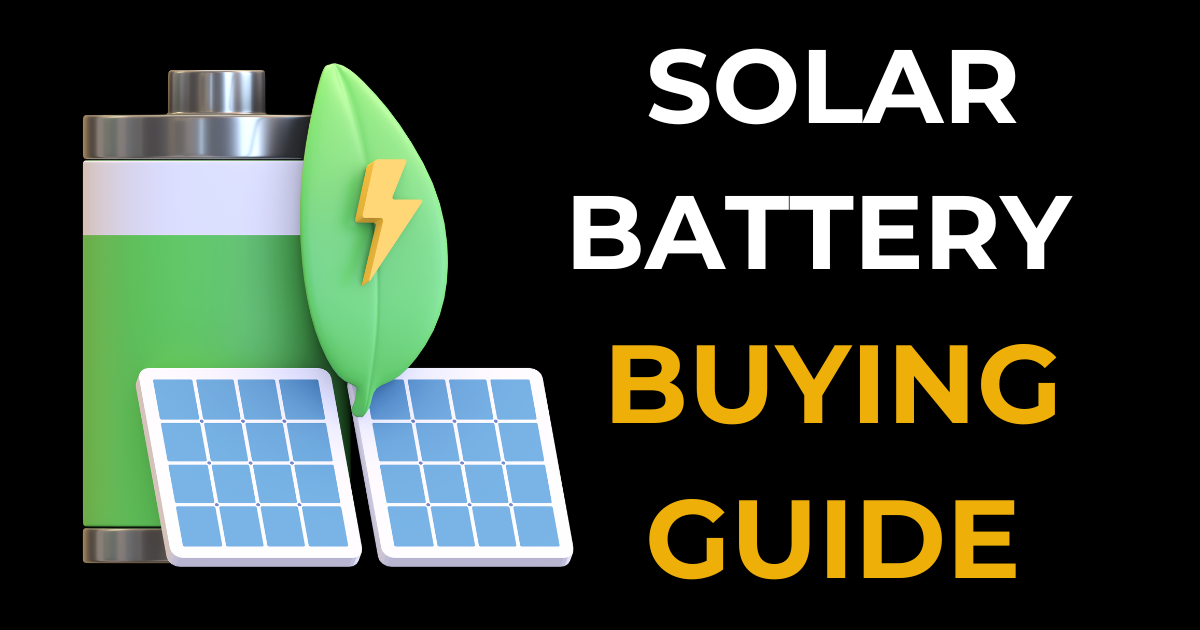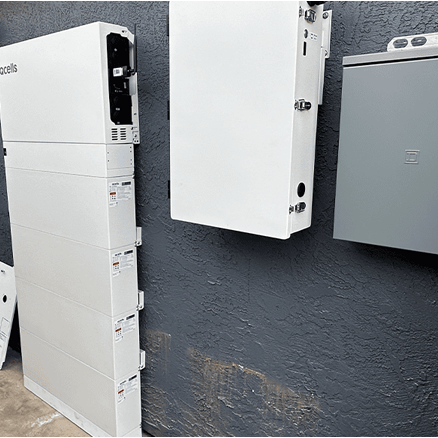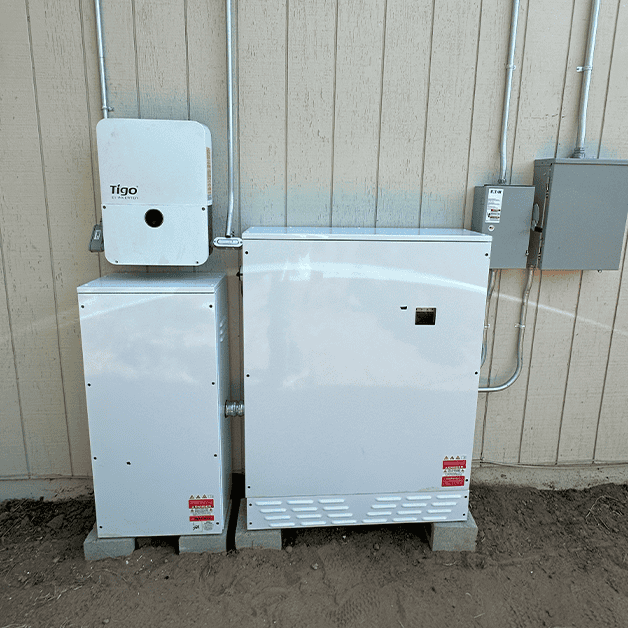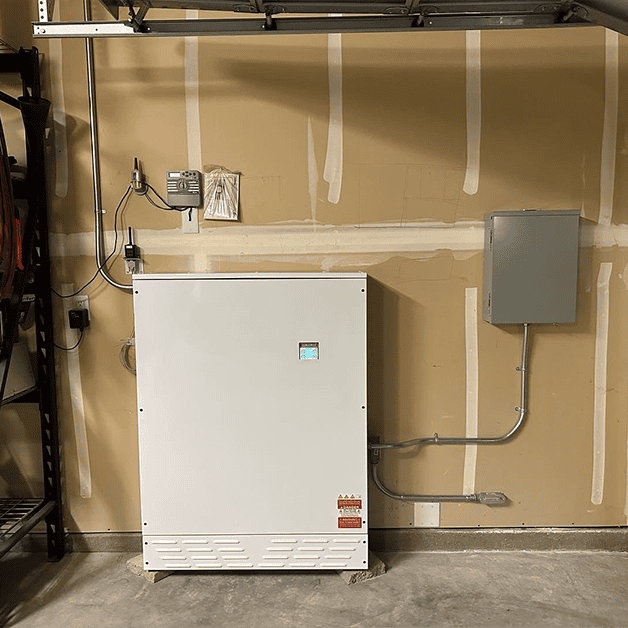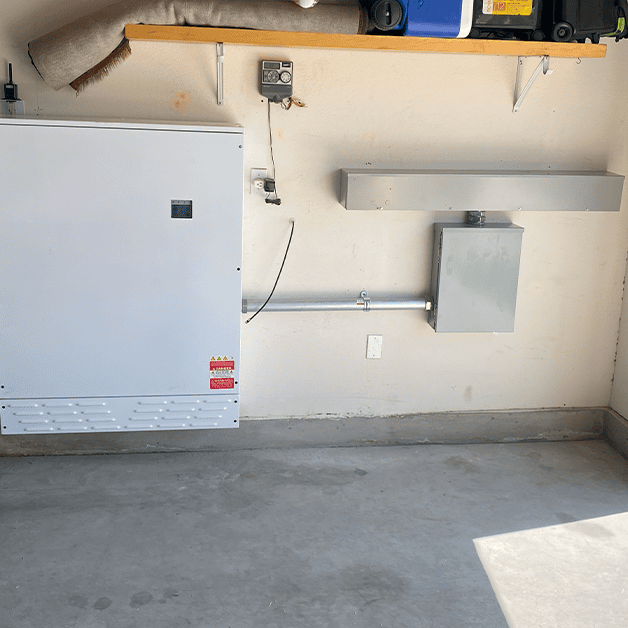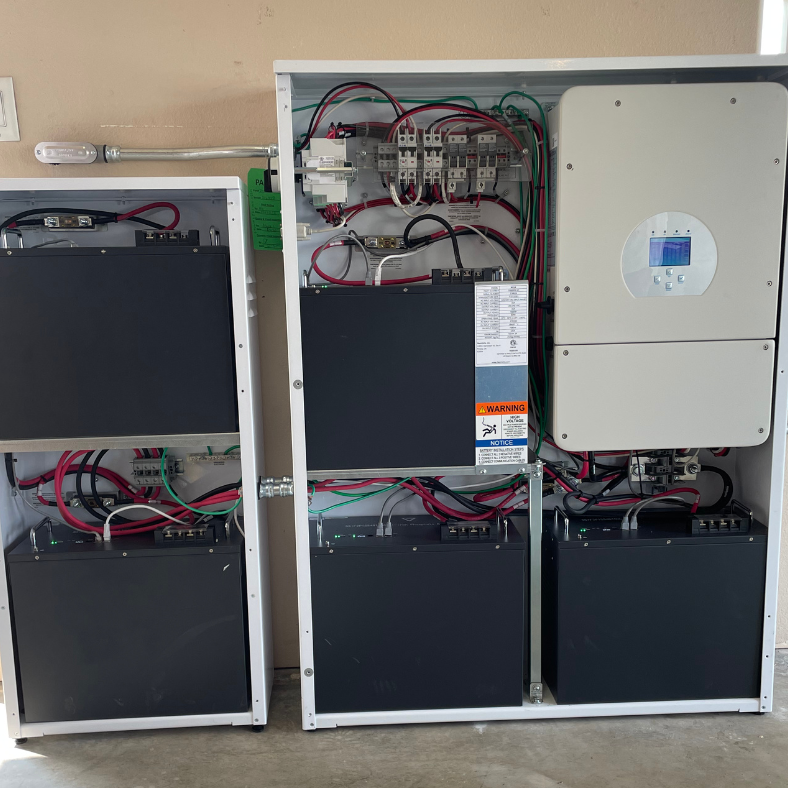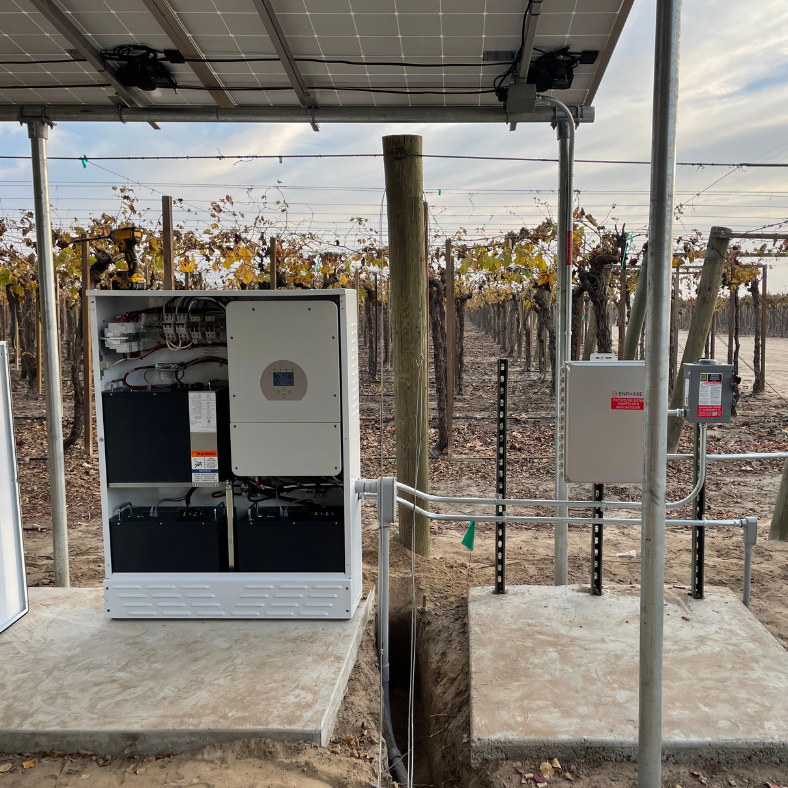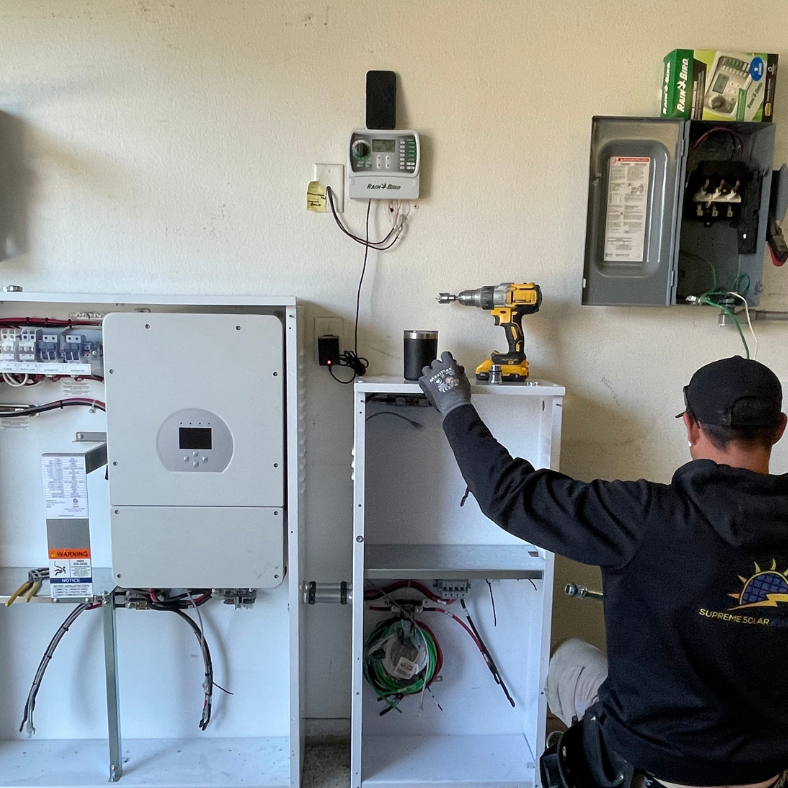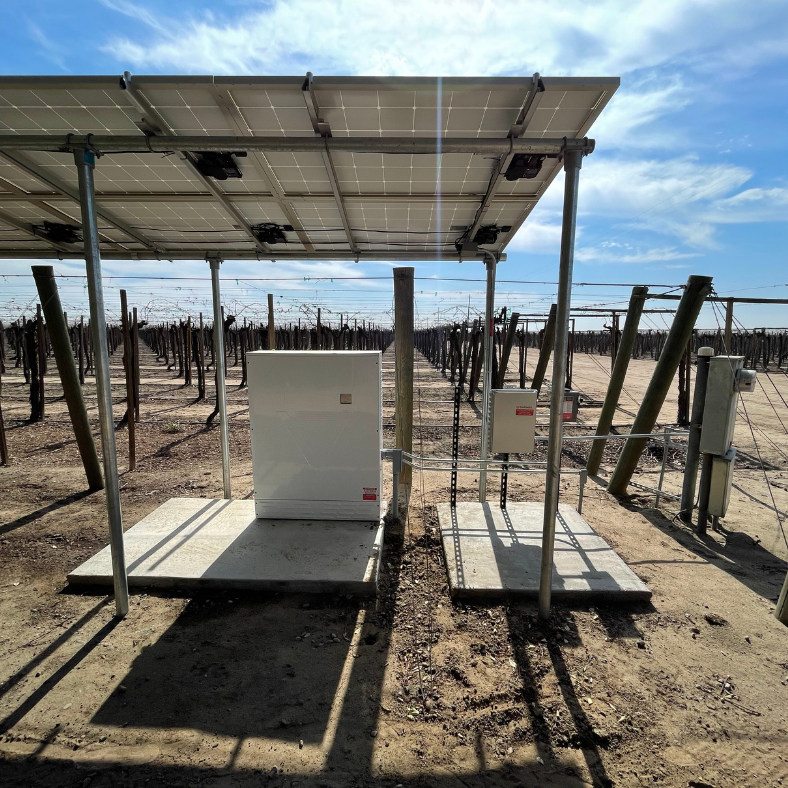Introduction: Understanding Solar Battery Types and Their Benefits
Choosing the Right Solar Battery for Your Home Energy Need
As solar energy gains popularity, more homeowners are choosing solar battery storage to maximize energy savings and resilience. Solar batteries allow you to store extra energy generated during the day, so you have it ready for nighttime use or power outages. This guide explores the different types of solar batteries available, including their benefits and best use cases, so you can select the option that best fits your goals.
Why Use Solar Batteries?
Solar batteries aren’t just for backup power; they offer a range of benefits:
- Increased Bill Savings: By storing energy, you can avoid high peak rates and minimize grid usage.
- Energy Independence: Batteries enable self-reliance, reducing dependence on utility companies.
- Eco-Friendly: Using stored solar power minimizes reliance on nonrenewable grid energy.
Determining your main goal—whether it’s savings, backup, or eco-consciousness—helps guide you to the best battery choice.
Types of Solar Batteries
Solar batteries are classified by chemical composition, which influences their cost, lifespan, and overall performance. Here’s a look at the most common types of solar batteries:
1. Lithium-Ion Batteries
Lithium-ion batteries are the most common for home solar storage due to their high energy density, meaning they can store a lot of energy in a compact space. Popular options include the Tesla Powerwall and Generac PWRcell.
Pros: High energy density, minimal maintenance, long lifespan (10+ years), and 80% or higher depth of discharge.
Cons: Higher cost, risk of thermal runaway if not installed properly, and possible environmental concerns with mining materials.
2. Lithium Iron Phosphate (LFP) Batteries
LFP batteries are a subcategory of lithium-ion but are more durable and eco-friendly. They operate at a wide temperature range and have a near-zero risk of overheating, making them ideal for self-consumption and time-of-use (TOU) savings.
Pros: Longer lifespan, deeper discharge, and safer than other lithium chemistries.
Cons: Higher upfront cost but worth it for reliability and eco-friendliness.
3. Lead-Acid Batteries
While once popular for solar storage, lead-acid batteries have largely been replaced due to their larger size, shorter lifespan, and maintenance needs. They are best for short bursts of energy rather than ongoing home backup.
Pros: Low initial cost, established technology, recyclable.
Cons: Limited discharge depth, shorter lifespan, high maintenance needs.
4. Flow Batteries
Flow batteries feature two tanks of charged electrolytes that produce energy when flowing between membranes. They offer 100% depth of discharge and a long lifespan, but their bulky size and high cost make them impractical for residential use.
Pros: 100% depth of discharge, no thermal runaway risk, fully recyclable, long lifespan (~30 years).
Cons: High cost, large size, limited availability for homes.
5. Saltwater Batteries
An emerging technology, saltwater batteries use saltwater as an electrolyte, providing an eco-friendly alternative to lithium-based batteries. While promising, they’re currently too expensive and large for residential use.
Pros: Environmentally friendly, 100% depth of discharge.
Cons: Bulky, high cost, not widely available for homes.
Top Five Solar Batteries We Use at Supreme Solar & Electric
At Supreme Solar & Electric, we focus on choosing the best solar batteries based on each customer’s unique needs and home setup. Here are the top five batteries we use, chosen for their quality, compatibility, and specialized features for different homeowner goals. To learn more about how these batteries work under NEM 3.0, check out our Solar Batteries page.
1. SolarEdge Battery – Ideal for Shaded Areas
The SolarEdge battery is our top choice for homes with shading issues. Thanks to its built-in optimizers, the SolarEdge battery ensures each panel performs at its best, even when some panels are shaded. Homeowners also appreciate the all-in-one app, which provides a seamless experience by allowing them to monitor both solar and battery performance in one place.
2. Tesla Powerwall 3 – Best Cost-Effective Backup Solution
For homeowners primarily interested in backup capabilities, the Tesla Powerwall 3 is an excellent, cost-effective option. It offers reliable power storage, making it ideal for backup during outages. However, since it doesn’t include panel-level optimization, shading around the installation area can impact overall system performance. Still, the Tesla Powerwall’s affordability and robust backup make it a popular choice.
3. Franklin Battery – Perfect for Retrofit Installations
The Franklin battery is our go-to option for retrofitting onto existing solar systems. As an AC-coupled battery, it works well with various setups and is easy to install on homes with pre-existing solar panels. This flexibility makes it a solid choice for homeowners looking to add storage to their existing solar infrastructure without requiring extensive modifications.
4. Q-Cells Battery – Best Bang for Your Buck
For those looking for a cost-effective option, the Q-Cells battery is hard to beat. Known for its balance of performance and affordability, the Q-Cells battery provides reliable daily use without breaking the bank. It’s ideal for homeowners focused on maximizing their investment and achieving long-term savings with a budget-friendly option.
5. Enphase Battery – Great App Experience, Micro-Inverter Compatible
While further down our list, the Enphase battery remains a good option for homeowners who prioritize app integration and use micro-inverters. It’s an AC-coupled battery that requires micro-inverters to function, which some customers prefer due to the smooth app experience. Though not as high on our list for performance, it’s still a great option for those who value seamless monitoring and control.
Honorable Mention: NeoVolta Battery
The NeoVolta battery, available in both AC and DC-coupled options, offers excellent customer service and a straightforward design that makes it easy to use and maintain. We appreciate NeoVolta for its reliability and adaptability, making it a solid alternative for those seeking a flexible, user-friendly storage option.
Power Control Systems (PCS) – Enabling Larger Setups with Real-Time Control
A new advancement in solar storage technology, Power Control Systems (PCS), enables homeowners to connect larger solar and battery setups to smaller electrical panels without needing an electrical upgrade. PCS uses Current Transformers (CTs) to monitor real-time energy consumption, allowing the battery to throttle its output based on your home’s needs. This flexibility enables us to connect larger systems without exceeding California’s 120% rule, which restricts how much solar and battery capacity can be connected to your main panel. Supreme Solar & Electric has used PCS with the SolarEdge and Tesla Powerwall 3 batteries, and we love how easily you can manage power requirements directly in the mobile app. Current batteries with PCS capability include the Tesla Powerwall 3, Enphase battery, Franklin, and SolarEdge, providing adaptability without costly electrical upgrades.
Current Transformers (CTs) – Real-Time Monitoring for Precision Control
Current Transformers, or CTs, are vital components for solar battery systems, allowing them to accurately measure your home’s energy consumption in real-time. CTs help your battery know exactly when to charge, discharge, or hold back based on your household’s energy needs. This real-time monitoring provides an efficient energy management system, making sure the battery uses its stored power effectively and only when necessary.
Battery Management Software – Maximizing Profits with Export Rate Optimization
Some advanced solar batteries now come with Battery Management Software that allows them to intelligently manage discharge based on California’s export rates. With this software, batteries like the Tesla Powerwall 3, SolarEdge, and Enphase can analyze real-time grid rates, especially during high-demand months like August and September. If the grid is offering a high export rate of up to $3.50 per kilowatt-hour, these batteries can discharge power to the grid rather than the home, maximizing the value for the homeowner. This software makes it possible for homeowners to profit by exporting energy at peak times, providing flexibility and earning potential that enhances the return on investment for solar and battery systems.
Backup vs. Self-Consumption Batteries
Another important decision is whether you want a backup battery or a self-consumption battery. Here’s the difference:
- Backup Batteries: These batteries offer emergency power during outages, usually powering essential appliances. Ideal for areas prone to blackouts or homes with critical electrical needs.
- Self-Consumption Batteries: These batteries don’t have backup capability and are designed purely for daily energy savings. They’re great for reducing costs by storing energy during peak production and discharging during peak rates.
AC vs. DC-Coupled Batteries
Solar batteries are also classified by coupling type, which affects efficiency and compatibility with solar systems.
AC-Coupled Batteries
AC-coupled batteries are the primary choice for retrofitting existing solar systems, as they connect directly to the home’s AC panel. However, they require multiple conversions, slightly reducing efficiency to around 85-90%.
DC-Coupled Batteries
DC-coupled batteries are more efficient, retaining up to 97.5% of energy during conversion. They’re best suited for new solar installations but can be more complex to retrofit.
Best Types of Solar Batteries by Usage
Based on your goals, here’s a summary of the best solar battery types for specific needs:
- For High Storage Capacity and Longevity: Lithium Iron Phosphate (LFP). This type is ideal for daily self-consumption and high-discharge scenarios.
- For Backup Power: Lithium-Ion batteries like Tesla Powerwall provide reliable backup and high energy density for compact storage.
- For Cost-Effective, Short-Term Storage: Lead-Acid. If budget is a priority and you don’t mind regular maintenance, lead-acid is worth considering.
- Future Technologies to Watch: Flow and Saltwater Batteries. As these technologies evolve, they may become viable home storage options due to their eco-friendliness and lifespan.
Frequently Asked Questions (FAQs)
Have more solar battery questions? Check out our Solar Battery FAQs
What type of solar battery lasts the longest?
Currently, LFP batteries have the longest lifespans, lasting 10–15 years or more, with some models offering over 10,000 cycles. Flow batteries, though not widely available for homes, can last up to 30 years.
Which battery is best for daily self-consumption?
LFP batteries are ideal for daily self-consumption as they offer high discharge rates and longer lifespans, making them effective for households with time-of-use rates.
How do I know if I need a backup battery?
If you experience frequent power outages or want peace of mind during blackouts, a backup battery like the Tesla Powerwall is worth the investment. However, if your primary goal is reducing utility bills, a self-consumption battery may be sufficient.
Conclusion
Choosing the right solar battery for your home depends on factors like shading, backup needs, and budget. At Supreme Solar & Electric, we’ve found the following batteries work best for our customers’ unique needs:
- SolarEdge: Ideal for shaded areas with optimizers and an all-in-one app.
- Tesla Powerwall 3: Cost-effective for backup but less suited to shading.
- Franklin: Great for retrofitting existing solar systems.
- Q-Cells: Provides solid performance on a budget.
- Enphase: Excellent app experience and micro-inverter compatibility.
These options allow homeowners to make the most of solar and storage. For more details, check out our Solar Batteries under NEM 3.0 page.

